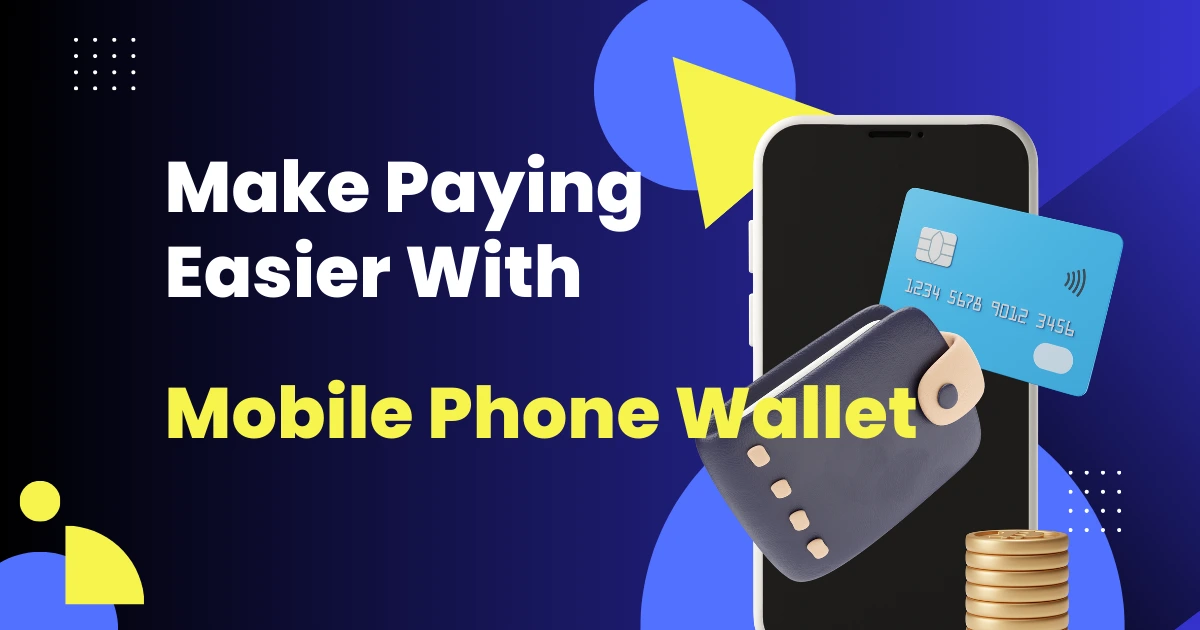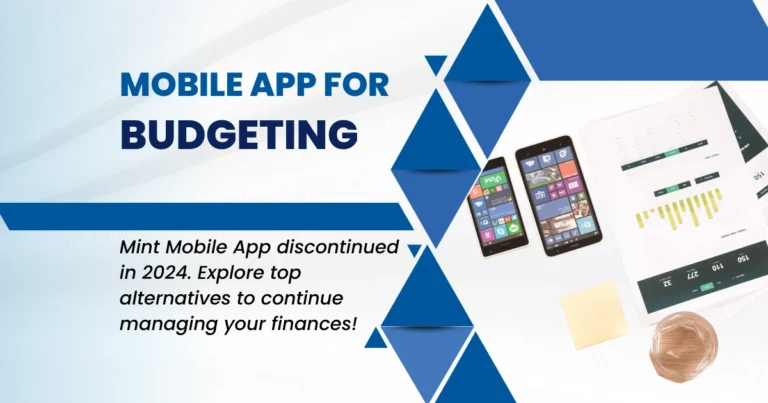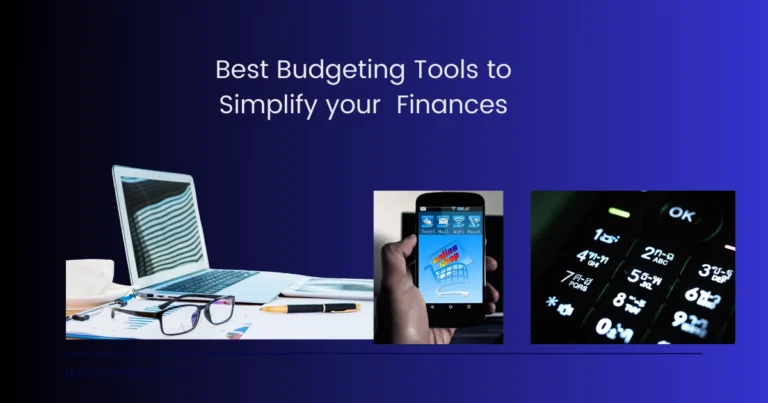Mobile Phone Wallet: Driving Powerful Game-Changing Innovations Forward

Mobile phone wallets have transformed the way transactions are conducted, offering unprecedented convenience and efficiency in the digital age. Platforms like Apple Pay, Google Wallet, and Samsung Pay have turned smartphones into essential payment tools. They provide convenience, speed, and enhanced security.
Mobile phone wallets allow users to store credit cards, debit cards, and even loyalty cards in a single, easily accessible digital format. As a result, they have streamlined the checkout process both in-store and online, making traditional payment methods feel outdated.
The evolving landscape of digital payments is marked by continuous innovation that simplifies transactions for both consumers and businesses. With advancements in technology like biometric authentication and near-field communication (NFC), mobile phone wallets enhance security and provide a frictionless user experience.
Businesses that adapt to these changes stand to benefit significantly by improving customer satisfaction and reducing cart abandonment.
Looking ahead to 2025, mobile payment innovations will continue to reshape the financial ecosystem. Emerging trends such as the integration of cryptocurrency payments and buy-now-pay-later options are poised to redefine consumer expectations.
In 2024, the global mobile payment market is projected to reach $3 trillion, reflecting a significant increase from previous years. This growth is driven by the widespread adoption of mobile wallets, with 70% of smartphone users having made a mobile payment in the last year.
Notably, Denmark leads in mobile payment adoption at 81.5%, followed closely by China and Sweden at 79.3%.
As these technologies become widespread, understanding and leveraging mobile phone wallet innovations will be crucial for brands aiming to stay competitive and relevant in a rapidly evolving market.
Table of Contents
1. Overview of Mobile Payments
Mobile phone wallets have become a cornerstone of the digital payments revolution. They offer a more efficient and secure alternative to traditional methods. Defined as digital applications that store payment information, mobile phone wallets have evolved significantly since their inception.
Initially, these wallets were simple repositories for credit and debit card details. Today, they offer features from loyalty card integration to advanced security measures like biometric authentication.
With global adoption rates continuing to climb, millions of people worldwide rely on mobile phone wallets daily. The global mobile payments market is expected to exceed $12 trillion by 2025, underscoring the rapid shift toward digital transactions.
Several key technologies drive the widespread adoption of mobile payments. One of the most transformative is Near Field Communication (NFC), which enables secure, contactless transactions between devices. NFC technology allows users to make purchases with a simple tap, enhancing both speed and security.
Another critical component of the mobile payment ecosystem is the integration of in-app purchases, fueled by the growth of e-commerce. As consumers increasingly shop online, businesses leverage in-app payment solutions to streamline the checkout process, providing a seamless and engaging shopping experience.
The benefits of mobile payments encompass convenience, speed, and enhanced security. Mobile phone wallets eliminate the need to carry physical cards or cash, offering a streamlined, on-the-go payment method. Transactions are processed rapidly, reducing wait times and enhancing customer satisfaction.
Security is a major advantage with features like encryption, tokenization, and biometric authentication. Mobile payments provide a higher level of protection compared to traditional methods, redefining the approach to financial transactions.
The integration of mobile phone wallet innovations creates a seamless user experience that aligns with modern consumer expectations. As technology advances, mobile payments are expected to become integral to daily life, reshaping how transactions are conducted and how businesses interact with customers.
Table 1: Comparison of Key Mobile Payment Technologies
| Technology | Definition | Main Use Cases | Benefits |
|---|---|---|---|
| QR Code Payments | Scannable codes used for transactions | In-store payments, online purchases | Easy, fast, and contactless |
| NFC (Near Field Communication) | Short-range wireless tech for secure payments | Contactless card payments, mobile wallets | High security and convenience |
| Biometric Authentication | Using unique physical characteristics for security | Mobile wallet transactions, banking apps | Enhanced security and speed |
| Tokenization | Replacing sensitive info with unique identifiers | Card payments, online transactions | Reduces risk of data breaches |
At the end of the section discussing global adoption rates and the market’s growth trajectory, insert: In 2024, the global mobile payment market is projected to reach $3 trillion, reflecting a significant increase from previous years. This growth is driven by the widespread adoption of mobile wallets, with 70% of smartphone users having made a mobile payment in the last year. Notably, Denmark leads in mobile payment adoption at 81.5%, followed closely by China and Sweden at 79.3%.

2. Consumer Adoption Trends
The widespread adoption of mobile payment technologies has transformed the global financial landscape, with QR code payments and biometric authentication emerging as pivotal trends in the consumer market.
QR Code Payments
QR code payments have experienced a meteoric rise in recent years, becoming a mainstream payment method worldwide. This trend is most prominent in Asia, particularly in countries like China and India, where platforms like Alipay and Paytm have revolutionized the way transactions are conducted. In these regions, QR codes are ubiquitous, used everywhere from high-end retail stores to small street vendors, allowing for instant and contactless payments. The success of QR code payments in Asia has inspired their expansion into other markets, including Europe and North America. Businesses globally are recognizing the efficiency and convenience of this technology, and its adoption is becoming increasingly common in physical stores and digital platforms.
The integration of QR code payments into both physical and digital shopping experiences has also been transformative. In physical retail environments, QR codes are used to facilitate quick checkouts, reducing wait times and improving the overall customer experience. Online, QR codes are integrated into e-commerce platforms, enabling easy and secure payments. For example, consumers can scan a code using their mobile phone wallet app to complete purchases without the need to enter card details, adding a layer of convenience and security. As businesses continue to adapt to consumer demand for seamless transactions, QR code payments are poised to become an even more integral part of global commerce.
Biometric Authentication
Biometric authentication is another rapidly growing trend in mobile payments, enhancing both security and convenience for consumers. Technologies like fingerprint scanning and facial recognition have become standard features in many smartphones and are now widely used to authorize financial transactions. These methods have gained significant consumer trust due to their effectiveness in safeguarding personal and financial information. Unlike traditional PINs or passwords, biometric data is unique to each individual, making it much harder for unauthorized parties to gain access to sensitive information. As a result, many mobile phone wallets, including Apple Pay and Google Wallet, rely on biometric authentication to provide users with a secure payment experience.
The security benefits of biometric authentication are profound. Fingerprint and facial recognition not only offer a higher level of protection but also streamline the user experience. Instead of manually entering passwords or PINs, users can authorize transactions instantly with a simple touch or glance, making the process faster and more efficient. This combination of security and convenience has driven widespread adoption, with studies showing that consumers are more likely to use mobile wallets that incorporate biometric technology.
Looking to the future, the potential of biometric authentication is even more exciting. Emerging technologies like voice recognition and iris scanning are on the horizon, promising to further enhance transaction security. Voice recognition, for instance, could enable users to authorize payments through voice commands, adding another layer of convenience. Similarly, iris scanning offers an ultra-secure authentication method by analyzing the unique patterns in a user’s eye. These advancements are expected to become more prevalent as technology evolves and consumer demand for secure, hassle-free payment options continues to grow.
Overall, the rise of biometric authentication reflects a broader shift toward more secure and user-friendly payment experiences. As businesses and financial institutions continue to innovate, biometric technologies will play a crucial role in shaping the future of mobile payments, offering solutions that cater to the needs of a digital-first world.
Under Biometric Authentication, when discussing the rise of biometric security and consumer preference, insert: Biometric authentication is also on the rise, with 77% of users preferring multi-factor authentication over traditional passwords for cybersecurity. The global biometric authentication and identification market is expected to reach nearly $100 billion by 2027, growing at an annual rate of 14.6% from 2019.

3. Marketing Opportunities for Businesses
As mobile phone wallets become a central part of the digital payment landscape, businesses have a unique opportunity to leverage this technology to boost consumer engagement and drive sales. From incentivizing users to optimizing the checkout experience, a strategic approach to mobile payment innovations can yield significant benefits.
Incentivizing Users to Adopt Mobile Payments
One of the most effective ways to encourage consumers to adopt mobile payments is through the use of incentives. Offering cashback, rewards, and discounts has proven to be a powerful strategy for driving user adoption and repeat transactions. For instance, major brands like Starbucks and Walmart have successfully implemented loyalty programs linked to mobile payments.
Starbucks, in particular, has seen tremendous success with its mobile app, which rewards users with points for each purchase made through the app. These points can then be redeemed for free drinks and other perks, creating a cycle of loyalty and continuous app engagement. Similarly, Walmart’s mobile wallet offers exclusive discounts for users who choose to pay through their app, incentivizing shoppers to shift away from traditional payment methods.
To maximize the impact of these incentives, businesses should tailor their offers to align with consumer preferences. Personalized rewards, such as discounts on frequently purchased items or special offers on birthdays, can make users feel more valued and increase their likelihood of using mobile payment options.
Additionally, leveraging limited-time offers or gamifying the experience—like introducing rewards for reaching certain milestones—can create a sense of urgency and excitement. It’s also crucial to promote these incentives through various marketing channels, such as email campaigns, social media, and in-store signage, to ensure maximum visibility and engagement.
Moreover, businesses should continuously analyze the performance of their incentive programs and adjust them based on consumer feedback and behavior. By understanding what drives user adoption, companies can optimize their strategies and build long-term relationships with their customers.
Under Incentivizing Users to Adopt Mobile Payments, to emphasize the impact of security features on consumer comfort, insert: Incentives play a crucial role in consumer adoption, as 65% of consumers feel comfortable using mobile payments due to security features like biometric authentication.
Streamlining the Checkout Process
A seamless checkout experience is critical for boosting conversions and reducing cart abandonment. With the rise of mobile phone wallets, businesses must prioritize optimizing their payment processes to meet consumer expectations. One of the most effective techniques is implementing one-click payments, which allow users to complete transactions with minimal friction. Amazon pioneered this concept with its “1-Click” ordering system, significantly increasing its conversion rates. Today, many e-commerce platforms and mobile apps have adopted similar features to simplify the purchasing journey. By minimizing the steps required to complete a payment, businesses can reduce the likelihood of customers abandoning their carts due to frustration or inconvenience.
Another strategy for enhancing the checkout experience is personalizing payment journeys. This can be achieved by offering tailored payment options based on user preferences or purchase history. For example, if a customer frequently uses a specific mobile wallet, presenting that option first can save time and create a more intuitive experience. Additionally, incorporating features like saved payment information and automatic address filling can further streamline the process.
Technology plays a pivotal role in creating efficient and personalized payment experiences. Artificial intelligence (AI) can analyze user behavior to predict and suggest the most relevant payment methods, reducing friction and enhancing convenience. AI can also be used to optimize the timing and presentation of payment options, ensuring that the user experience is as smooth as possible. Furthermore, integrating AI-driven fraud detection tools can provide an added layer of security, giving consumers peace of mind when using mobile phone wallets.
The Buy-Now-Pay-Later (BNPL) trend is another opportunity businesses can tap into. By offering flexible payment plans, companies can appeal to budget-conscious consumers and boost sales. Integrating BNPL options into the checkout flow can enhance the user experience and encourage higher-value purchases.
In today’s competitive market, businesses that prioritize a seamless and efficient checkout process will have a distinct advantage. By leveraging mobile phone wallet innovations and emerging technologies, companies can not only improve customer satisfaction but also drive long-term growth and loyalty.
Under Streamlining the Checkout Process, to highlight the effectiveness of biometric security, insert: The use of biometric authentication in mobile banking apps can reduce fraud by up to 96%.

4. Security Measures in Mobile Payments
In the world of digital transactions, security is paramount. As mobile payments become more prevalent, robust security protocols are essential to protect consumer data and maintain trust.
Overview of Current Security Protocols
Mobile payment security relies on a multi-layered approach that includes tokenization, encryption, and secure payment gateways. Tokenization is a method that replaces sensitive payment information, such as credit card numbers, with a unique identifier or token. This token cannot be used outside the intended transaction, making it useless to hackers. By removing sensitive data from the transaction process, tokenization greatly reduces the risk of data breaches.
Encryption is another vital component, ensuring that any information transmitted during a transaction is unreadable to unauthorized parties. Mobile phone wallets use advanced encryption standards to encode data, which is only accessible through secure decryption keys. This ensures that even if data is intercepted, it cannot be deciphered.
Secure payment gateways add an extra layer of protection by managing the transaction flow between the consumer and the merchant. These gateways use sophisticated authentication protocols to verify the legitimacy of each transaction. By combining these methods, mobile phone wallets provide a fortified defense against fraud and unauthorized access, making digital payments safer than ever.
As cyber threats continue to evolve, these security measures are crucial in safeguarding user information and preventing financial fraud. Companies must stay vigilant and continuously update their security frameworks to address emerging vulnerabilities.
Future of Mobile Payment Security
Looking to the future, advancements in artificial intelligence (AI) and machine learning are set to revolutionize mobile payment security. AI can analyze vast amounts of transaction data to detect patterns and anomalies indicative of fraudulent activity. This predictive analysis allows for real-time fraud prevention, identifying and blocking suspicious transactions before they are completed. By continuously learning from new data, AI systems become more effective over time, adapting to ever-evolving security threats.
Machine learning algorithms can also enhance biometric authentication, a key security feature in mobile payments. As biometric technologies like fingerprint scanning and facial recognition become more sophisticated, they provide an added layer of defense against unauthorized access. Future advancements may include voice recognition and behavioral biometrics, which analyze unique patterns such as typing speed or device handling. These technologies can create a comprehensive security profile for each user, making it even more difficult for fraudsters to bypass authentication measures.
The integration of AI-driven security solutions offers a proactive approach to protecting consumer data. Instead of reacting to breaches after they occur, businesses can prevent them in real time. As mobile payment adoption grows, the continued evolution of security technology will be crucial in maintaining consumer confidence and ensuring the safety of digital transactions.
5. Future Outlook of Mobile Phone Wallets and Payments
The future of mobile payments is set to be shaped by innovative advancements, including the integration of cryptocurrency and the rising popularity of Buy-Now-Pay-Later (BNPL) services. Both trends present opportunities and challenges for businesses and consumers alike.
Cryptocurrency Payments
As cryptocurrencies like Bitcoin and Ethereum gain mainstream acceptance, the potential for integrating these digital currencies into mobile phone wallets has become a hot topic. The appeal of cryptocurrency payments lies in their decentralized nature, providing a secure and efficient method for conducting transactions without the need for traditional banks or financial intermediaries. For consumers, the ability to pay with cryptocurrencies through mobile wallets adds a layer of convenience, especially for international transactions, as it eliminates currency conversion fees and delays.
However, the integration of cryptocurrency payments is not without challenges. The volatility of cryptocurrencies remains a significant barrier, as price fluctuations can impact both consumers and merchants. Additionally, regulatory uncertainty continues to be a concern, with different countries adopting varying stances on the legality and regulation of digital currencies. Despite these hurdles, consumer interest in cryptocurrency payments is growing, particularly among younger and tech-savvy demographics. This trend presents a lucrative opportunity for businesses that can navigate the complexities of cryptocurrency adoption and offer innovative payment solutions to their customers.
For companies willing to embrace the potential of cryptocurrency payments, the rewards could be substantial. Early adopters may gain a competitive advantage and appeal to a broader, more diverse customer base. Furthermore, as regulatory frameworks become clearer and more stable, the integration of cryptocurrencies into mobile phone wallets may become a standard feature, revolutionizing the way we conduct digital transactions.

Buy-Now-Pay-Later (BNPL) Options
The Buy-Now-Pay-Later (BNPL) model has rapidly become a popular payment option, transforming the way consumers make purchases. BNPL services, such as Klarna, Afterpay, and Affirm, allow shoppers to split their payments into manageable installments without incurring interest, provided they pay on time. This convenience has driven widespread adoption, especially among millennials and Gen Z consumers, who appreciate the flexibility of spreading out costs. Mobile phone wallets that integrate BNPL options offer an even more seamless experience, enabling users to choose flexible payment plans at checkout with just a few taps.
The benefits of BNPL are clear for both consumers and businesses. For consumers, BNPL provides an opportunity to manage their budgets more effectively, making higher-value purchases more accessible. For businesses, offering BNPL options can lead to increased sales and higher average order values. Studies have shown that consumers are more likely to complete purchases and spend more when given the flexibility of paying over time. This payment model can also help reduce cart abandonment, a significant issue for online retailers.
However, there are risks associated with BNPL services. For consumers, the ease of deferring payments can lead to overspending and potential financial strain if installments are missed. Businesses also face risks, such as the potential for increased returns and disputes. Additionally, as the BNPL market grows, regulatory scrutiny is intensifying, and companies must stay compliant with evolving financial regulations.
Despite these challenges, the BNPL trend is expected to continue shaping the future of mobile payments. Businesses that integrate BNPL options into their payment offerings can capture a growing market segment and provide a more attractive, consumer-friendly shopping experience. As mobile phone wallets become more sophisticated, the incorporation of BNPL services will further enhance the convenience and versatility of digital transactions.
Table 2: Benefits vs. Risks of Buy-Now-Pay-Later (BNPL) Services
| Category | Benefits | Risks |
|---|---|---|
| For Consumers | – Budget management with installment payments | – Potential for overspending and debt |
| – Access to high-value purchases | – Late fees and negative credit impact | |
| For Businesses | – Increased sales and higher average order values | – Higher return rates and potential disputes |
| – Reduced cart abandonment | – Regulatory scrutiny and compliance requirements |
Under Buy-Now-Pay-Later (BNPL) Options, to showcase the projected growth of the BNPL market, insert: The Buy-Now-Pay-Later (BNPL) market is also expanding, with the global market expected to grow at a compound annual growth rate of 26.93% from 2021 to 2028. This growth presents new opportunities for businesses to offer flexible payment options to consumers.
Conclusion
Mobile phone wallet innovations are reshaping the financial landscape, offering unprecedented convenience, speed, and security for consumers and businesses alike. Technologies such as QR code payments, biometric authentication, and emerging trends like cryptocurrency integration and Buy-Now-Pay-Later (BNPL) services are simplifying transactions and enhancing the overall user experience. These advancements make it easier for consumers to make secure, contactless payments and for businesses to improve conversion rates and customer satisfaction. By embracing these technologies, companies can tap into new revenue streams, attract tech-savvy customers, and build lasting consumer loyalty.
The impact of these innovations goes beyond convenience. Mobile Payment Security measures like tokenization, encryption, and biometric authentication are setting new industry standards for protecting sensitive data and preventing fraud. As consumers grow more comfortable with digital payments, the trust fostered by these advanced security protocols will be crucial in driving even greater adoption of mobile phone wallets.
Looking ahead, businesses must remain proactive in adapting to these payment innovations. The integration of mobile phone wallet technologies is no longer a luxury but a necessity for staying competitive in a digital-first world. Companies that fail to adapt may find themselves at a disadvantage, losing out to competitors who offer faster, more secure, and user-friendly payment experiences. Additionally, staying updated with emerging trends, such as AI-driven security solutions and cryptocurrency payments, will be essential for future-proofing payment strategies.
In an era defined by rapid technological advancements, businesses that embrace and leverage Mobile Phone Wallet innovations will be well-positioned to thrive. The future of payments is digital, and the opportunities for growth and innovation are limitless. By keeping pace with these changes, companies can ensure they are meeting consumer expectations and securing a strong foothold in the evolving landscape of digital commerce.





